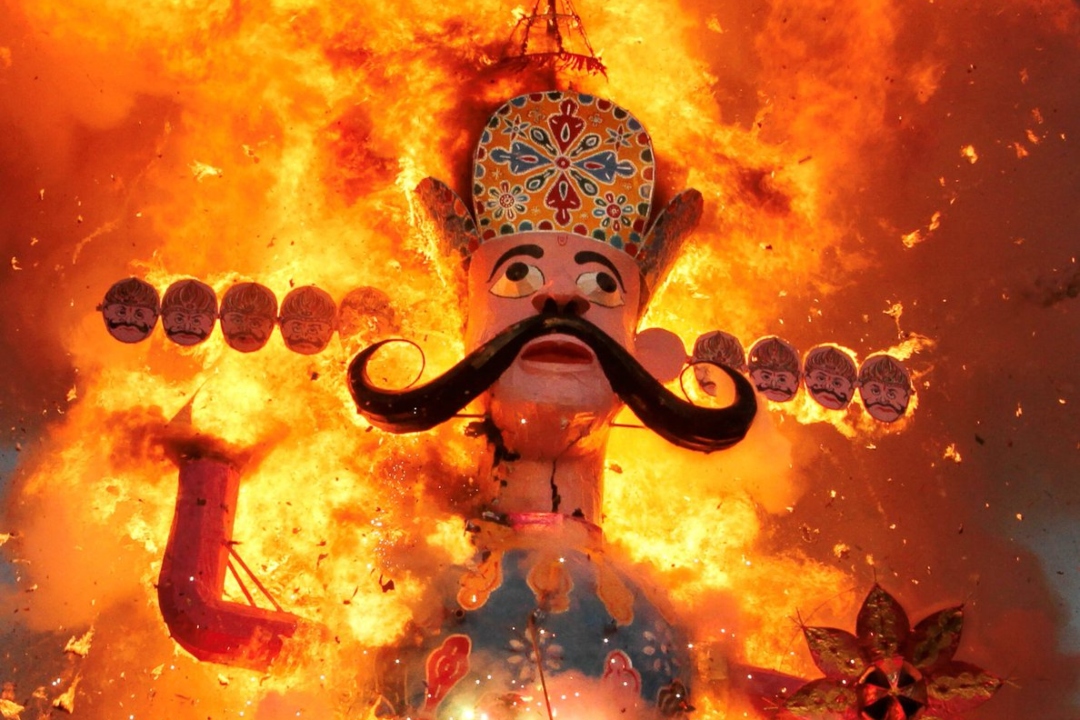Kannav Singh Jamwal
India is a land of many cultures and traditions. One of its very important festivals is the festival of Dussehra. Dussehra is a religious festival and is celebrated in India and Nepal and also in some other countries. The celebration of Dussehra goes on for ten days. In the northern India, people celebrate it as Navaratri. Dussehra is derived from Sanskrit words dasha (ten) and hara (defeat). It signifies the victory of Ram over Ravan as the Ravan had ten heads and was the king of all the demons. This year Dussehra is celebrated on October 15. Dussehra is also called Dasara or Vijayadashami, in Hindu religion. Ram an avatar of Vishnu, defeated the Ravan, demon king of the Sri Lanka who had kidnapped the wife of Lord Rama, Sita to take revenge of his sister, Suparnakha. From then, the day Lord Rama killed Ravana was started celebrating as the Dussehra festival. Dussehra is celebrated in the month of Ashvina (September-October). In North India, the people are organizing Ram Lila. Rama Lila showing the different scenes from the life of Rama is staged at night. People go to see it and learn many important lessons.
Dussehra falls every year in the months of September and October, 20 days before Diwali. People are eagerly waiting for this festival. Dussehra teaches us that good will always win over evil. It shows us the importance of truth. In different parts of the country Dussehra is celebrated differently. Dussehra is a prominent festival in India, and as per the Hindu traditions, people break their Navratri fast on this day and enjoy by visiting fairs, watching Ram Lila dance-dramas, spending time with family on this opportunity of a holiday, eating Satvik food and cracking fireworks together. The ladies prepare for their pujas while the men buy crackers to celebrate it heartily. In West Bengal, Assam Dussehra is known as Durga Puja. Goodess Durga signifies the strength of a female. She has ten hands and in each hand there is a weapon. According to the historical beliefs and most famous Hindu scripture, the Ramayana, it has been mentioned that Lord Rama had performed a chandi-puja (holy prayer in order to get blessings of the Goddess Durga Mata to kill the Ravan. Ram symbolizes good and Ravan represents evil. Lord Rama was accompanied by his brother Lakshman and follower Hanuman with an army of monkeys who went all the way to Lanka (Ravana’s kingdom) to fight Ravana and bring back Sita. On their way, Rama prayed to Durga, to seek the blessings of the goddess of courage and power. The special monkey was the Hanuman. Hanuman is a Hindu god and divine vanara (monkey) companion of the god Rama. Hanuman is one of the central characters of the Hindu epic Ramayana. Hanuman is the biggest devotee of Lord Rama. Hanuman is mentioned in several other texts, such as the epic Mahabharata and the various Puranas. Dussehra teaches us that good always trumps evil and that light will always conquer darkness.
Trending Now
E-Paper


